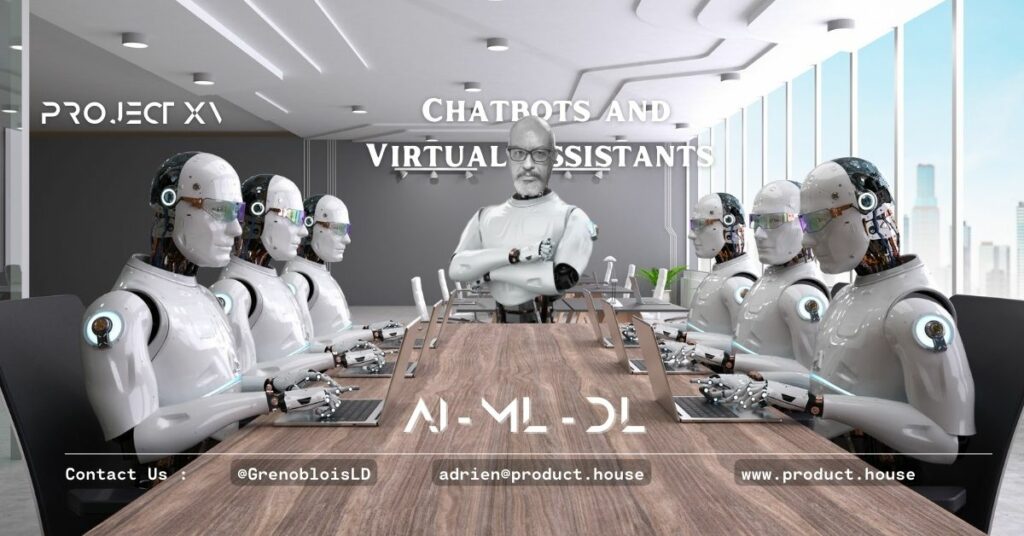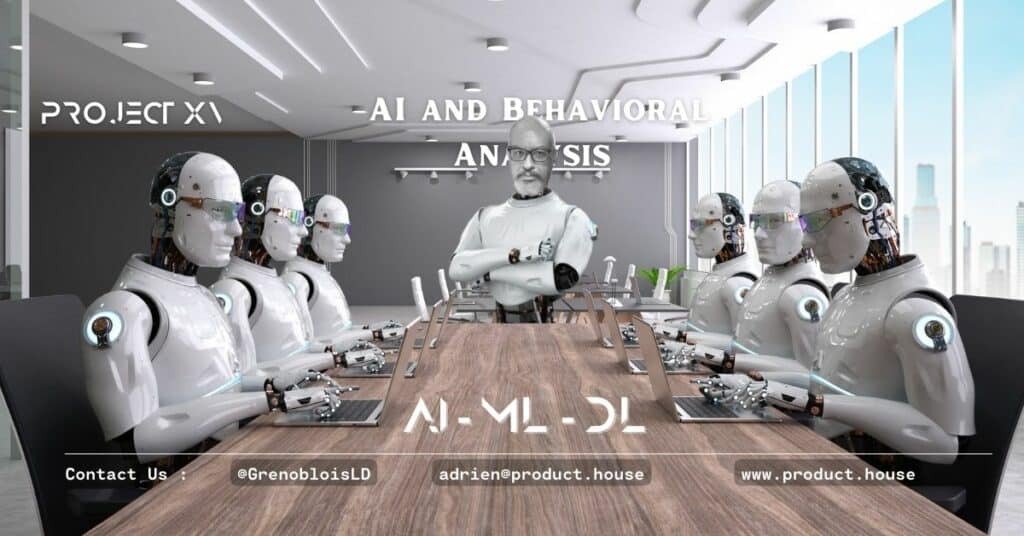Chatbots and Virtual Assistants: How AI Is Changing Customer Service

In today’s digital age, customers expect prompt, personalized, and efficient customer service. Traditional methods such as email and phone support can be time-consuming and often fail to meet these expectations. However, with the rise of artificial intelligence (AI), chatbots and virtual assistants are changing the way businesses provide customer service.
Chatbots and virtual assistants are AI-powered software programs that can interact with customers via text or voice communication. They are designed to understand natural language and provide automated responses to customer queries, often in a conversational manner.
In this article, we’ll explore the benefits and challenges of using chatbots and virtual assistants in customer service, as well as some real-world examples of successful implementations.
Benefits of Using Chatbots and Virtual Assistants in Customer Service
- 24/7 Availability: Chatbots and virtual assistants can provide round-the-clock customer service, allowing businesses to respond to customer queries quickly and efficiently.
- Personalization: Chatbots and virtual assistants can be programmed to personalize customer interactions based on the customer’s purchase history, browsing behavior, and preferences.
- Cost-Effective: Chatbots and virtual assistants can handle multiple customer queries simultaneously, reducing the need for human customer service representatives and cutting costs.
- Scalability: Chatbots and virtual assistants can handle a large volume of customer queries at once, ensuring that all customers receive timely responses.
- Improved Customer Experience: Chatbots and virtual assistants can provide instant and accurate responses to customer queries, improving the overall customer experience.
Challenges of Using Chatbots and Virtual Assistants in Customer Service
- Lack of Human Touch: Some customers may prefer human interaction and find chatbots and virtual assistants impersonal.
- Technical Limitations: Chatbots and virtual assistants may struggle to understand complex customer queries or provide accurate responses to certain questions.
- Initial Setup and Maintenance: Setting up chatbots and virtual assistants requires technical expertise and ongoing maintenance to ensure they are performing optimally.
- Data Security and Privacy Concerns: Chatbots and virtual assistants may handle sensitive customer information, raising concerns about data security and privacy.
Real-World Examples of Successful Chatbot and Virtual Assistant Implementations
- H&M’s Chatbot: H&M’s chatbot helps customers find products, provides style inspiration, and answers frequently asked questions. It has reduced response times by 50% and improved customer satisfaction.
- Domino’s Pizza: Domino’s virtual assistant, Dom, helps customers place orders and track their delivery. It has reduced order processing time by 75% and improved customer satisfaction.
- Capital One’s Eno: Capital One’s virtual assistant, Eno, helps customers manage their finances, track their spending, and pay bills. It has reduced call volume by 20% and improved customer satisfaction.
Conclusion
Chatbots and virtual assistants are changing the way businesses provide customer service, providing benefits such as 24/7 availability, personalization, cost-effectiveness, scalability, and improved customer experience. However, challenges such as a lack of human touch, technical limitations, initial setup and maintenance, and data security and privacy concerns must also be considered. As AI technology continues to advance, chatbots and virtual assistants will become more sophisticated, providing even greater benefits to businesses and customers alike.
FAQs
- What is a chatbot?
A chatbot is an AI-powered software program designed to interact with customers via text or voice communication. - How do chatbots and virtual assistants work?
Chatbots and virtual assistants are designed to understand natural language and provide automated responses to customer queries, often in a conversational manner. - What are the benefits of using chatbots and virtual assistants in customer service?
Benefits include 24/7 availability, personalization, cost-effectiveness, scalability, and improved customer experience. - What are the challenges of using chatbots and virtual assistants in customer service?
Challenges include a lack of human touch, technical limitations, initial setup and maintenance, and data security and privacy concerns. - What are some real-world examples of successful chatbot and virtual assistant implementations?
Examples include H&M’s chatbot, Domino’s Pizza virtual assistant, and Capital One’s Eno. - How can chatbots and virtual assistants improve customer experience?
Chatbots and virtual assistants can provide instant and accurate responses to customer queries, improving the overall customer experience. - How do businesses set up chatbots and virtual assistants?
Setting up chatbots and virtual assistants requires technical expertise and ongoing maintenance to ensure they are performing optimally. - Can chatbots and virtual assistants handle complex customer queries?
While chatbots and virtual assistants are becoming more sophisticated, they may struggle to understand complex customer queries or provide accurate responses to certain questions. - Are chatbots and virtual assistants cost-effective for businesses?
Yes, chatbots and virtual assistants can handle multiple customer queries simultaneously, reducing the need for human customer service representatives and cutting costs. - What is the future of chatbots and virtual assistants in customer service?
As AI technology continues to advance, chatbots and virtual assistants will become more sophisticated, providing even greater benefits to businesses and customers alike.
Resources
- “Chatbots and Virtual Assistants in the Retail Industry: 2021 Trends Report” by Mindsay
- “The Chatbot Revolution: Understanding How Chatbots Are Transforming Business” by Antonia Cusumano
- “The Rise of Chatbots in Customer Service” by Forbes
Book Summaries
Chatbots and Virtual Assistants in the Retail Industry: 2021 Trends Report
This book provides an overview of the current state and future trends of chatbots and virtual assistants in the retail industry. It covers topics such as:
- The benefits of chatbots and virtual assistants for retailers and customers, such as improving customer service, increasing sales, reducing costs, and enhancing loyalty.
- The challenges of chatbots and virtual assistants for retailers and customers, such as ensuring data privacy, security, compliance, quality, and personalization.
- The best practices for designing, developing, deploying, and optimizing chatbots and virtual assistants for retail use cases, such as product discovery, order tracking, delivery updates, feedback collection, loyalty programs, and more.
- The case studies of successful chatbot and virtual assistant implementations by leading retailers across different segments and regions, such as Sephora, H&M, Zalando, Walmart, and more.
The book also provides insights into the future of chatbots and virtual assistants in the retail industry, such as:
- The emerging technologies that will enhance the capabilities of chatbots and virtual assistants, such as natural language processing (NLP), computer vision (CV), voice recognition (VR), artificial intelligence (AI), machine learning (ML), blockchain (BC), etc.
- The new opportunities that will arise for chatbots and virtual assistants in the retail industry, such as conversational commerce (CC), omnichannel integration (OI), social media engagement (SME), augmented reality (AR), virtual reality (VR), etc.
- The key recommendations for retailers who want to leverage chatbots and virtual assistants to improve their customer experience (CX) and business performance.
The book is a comprehensive guide for retailers who want to understand how chatbots and virtual assistants can help them achieve their goals in a competitive market. It is also a valuable resource for anyone who is interested in learning more about the latest trends and innovations in the field of chatbot technology.
The Chatbot RevolutionUnderstanding How Chatbots Are Transforming Business
This book explores the evolution and impact of chatbots on various industries and functions. Chatbots are software applications that use natural language processing and artificial intelligence to interact with humans through text or voice. They can provide information, answer questions, perform tasks, and offer personalized experiences.
The book covers topics such as:
- The history and development of chatbots
- The benefits and challenges of chatbots for businesses and customers
- The best practices and strategies for designing, developing, and deploying chatbots
- The future trends and opportunities for chatbots
The author of the book is Antonia Cusumano Binetti, a principal and leader in PwC’s Global Human Capital practice. She has nearly 20 years of experience helping global businesses achieve their goals through organizational change management, talent management, leadership development, culture transformation, and digital enablement
Books
- “Chatbots: 100 Successful Business and Branding Bots” by Paul Bruemmer
- “Designing Bots: Creating Conversational Experiences” by Amir Shevat
- “Conversational AI and the Future of Customer Experience” by Bernard Marr
Relevant Experts
- Kriti Sharma, Vice President of AI at Sage
- Mariya Yao, Chief Technology Officer at Metamaven
- Tim Tuttle, CEO of Expect Labs
Kriti Sharma is an artificial intelligence technologist, business executive and humanitarian. She is the vice president of artificial intelligence and ethics at Sage Group, a global integrated accounting, payroll and payment systems provider. She is also the creator of Pegg, the world’s first virtual assistant managing everything from money to people, with users in 135 countries. She is the founder of AI for Good UK, which works to make artificial intelligence tools more ethical and accessible. She was named in Forbes magazine’s 30 under 30 list in 2018 and is a United Nations advisor on AI.
Mariya Yao is the chief technology officer at Metamaven, a company that helps enterprises optimize their revenue growth with AI. She is also the co-author of Applied Artificial Intelligence: A Handbook For Business Leaders and a Forbes contributor on AI topics. She has over a decade of experience in designing, developing and deploying AI systems across various domains such as e-commerce, healthcare and education. She is a frequent speaker at AI conferences and events.
Tim Tuttle is the CEO of Expect Labs, a company that develops voice-driven intelligent assistants for enterprise applications. He is also an angel investor and advisor to several AI startups. He has a PhD in artificial intelligence from MIT and has published over 20 papers on natural language processing, computer vision and machine learning. He was previously a founder of Truveo, an online video search engine that was acquired by AOL in 2006.
Case Studies
- H&M’s chatbot
- Domino’s Pizza virtual assistant
- Capital One’s Eno
Examples of Use
- Customer service support
- Sales and marketing assistance
- Informational inquiries
Glossary
- Chatbot: An AI-powered software program designed to interact with customers via text or voice communication.
- Virtual Assistant: An AI-powered software program designed to assist customers with tasks such as scheduling appointments or making purchases.
- Natural Language Processing: The branch of AI that focuses on the interaction between computers and human language, including tasks such as sentiment analysis, machine translation, and named entity recognition.
- Sentiment Analysis: The process of using natural language processing techniques to determine the emotional tone of a piece of text.
- Machine Translation: The use of natural language processing techniques to automatically translate text from one language to another.
Quizz Questions
- What is a chatbot?
- What are some benefits of using chatbots and virtual assistants in customer service?
- What are some challenges of using chatbots and virtual assistants in customer service?
- Name one real-world example of a successful chatbot or virtual assistant implementation.
- How can chatbots and virtual assistants improve the customer experience?
- What is the future of chatbots and virtual assistants in customer service?
- How do businesses set up chatbots and virtual assistants?
- Can chatbots and virtual assistants handle complex customer queries?
- Are chatbots and virtual assistants cost-effective for businesses?
- What is natural language processing?




